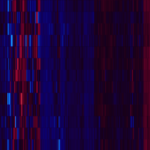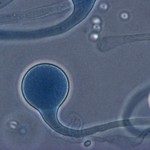Link to Pubmed [PMID] – 39220434
Link to HAL – hal-04689510
Link to DOI – 10.1016/j.lanepe.2024.101010
Lancet Reg Health Eur 2024 Oct; 45(): 101010
Mucormycosis is a deadly invasive fungal infection recently included in the WHO priority pathogen list. Here we sought to describe epidemiological trends of mucormycosis in France, and to evaluate factors associated with mortality.From 2012 to 2022, we implemented a nationwide prospective surveillance programme for mucormycosis in France, focusing on epidemiology, species, seasonal variations. Factors associated with 3-month mortality were studied by univariable and multivariable logistic regression.Among 550 cases of mucormycosis, the main underlying conditions were haematological malignancy (HM, 65.1%, 358/550), trauma (8%, 44/550), diabetes (7.5%, 41/550) and solid-organ transplants (6.5%, 36/550). Site of infection was pulmonary in 52.4% (288/550), rhinocerebral in 14.5% (80/550), and cutaneo-articular in 17.1% (94/550). Main species identified were Rhizopus arrhizus (21%, 67/316), Rhizopus microsporus (13.6%, 43/316), Lichtheimia corymbifera and Mucor circinelloides (13.3%, 42/316 each), Rhizomucor pusillus (12%, 38/316), and Lichtheimia ramosa (10.8%, 34/316). We found associations between underlying condition, site of infection, and infecting species, including a previously undescribed triad of trauma, cutaneo-articular localisations, and L. ramosa/M. circinelloides. Diagnostic contribution of Polymerase Chain Reaction (PCR) increased from 16% (4/25) in 2012 to 91% (61/67) in 2022, with more than 50% of diagnoses relying solely on PCR in 2022. We also found seasonal variations with relatively more cases in autumn. Ninety-day mortality was 55.8% (276/495). Independent prognostic factors were age, diagnosis in Intensive Care Unit (ICU), and HM while diagnosis after 2015 (i.e. large implementation of PCR) and surgery were associated with reduced mortality.This study reveals major mucormycosis epidemiological changes in France, with a large predominance of HM patients, and a parallel between PCR multicentre implementation and improved prognosis. We also evidence new associations between species, localisations and risk factors, as well as seasonal variations.Recurrent financial support from Santé Publique France and Institut Pasteur.











